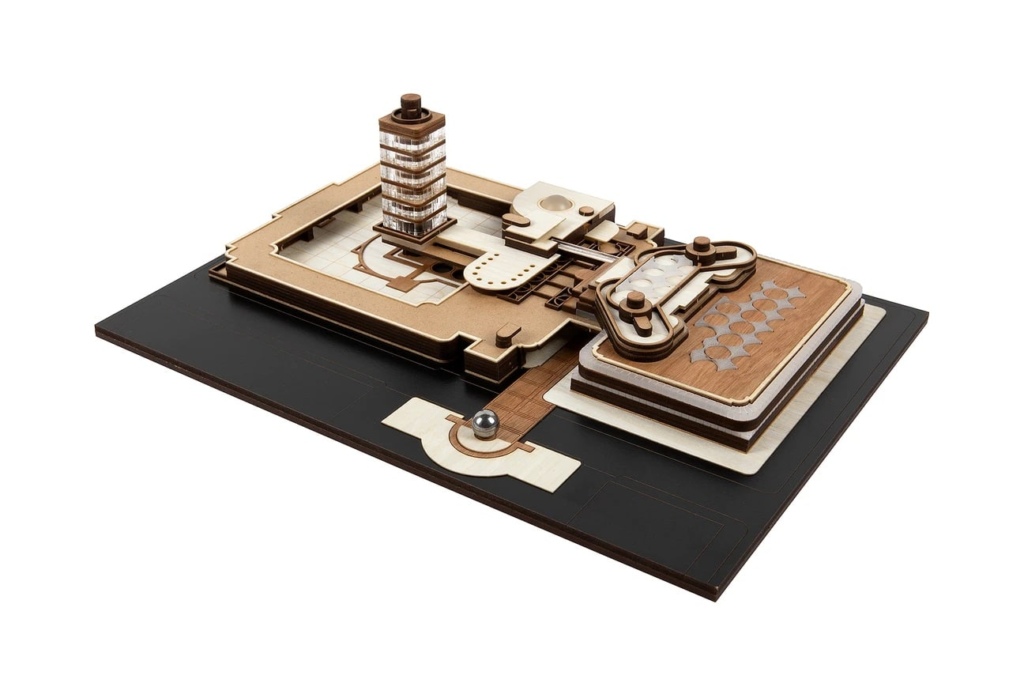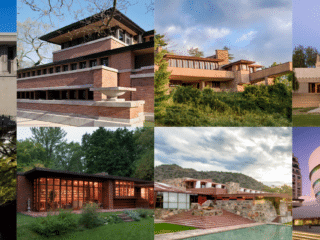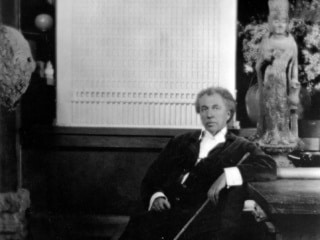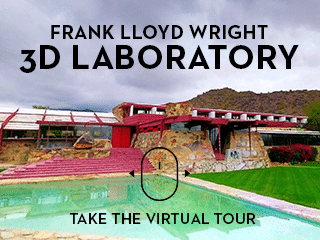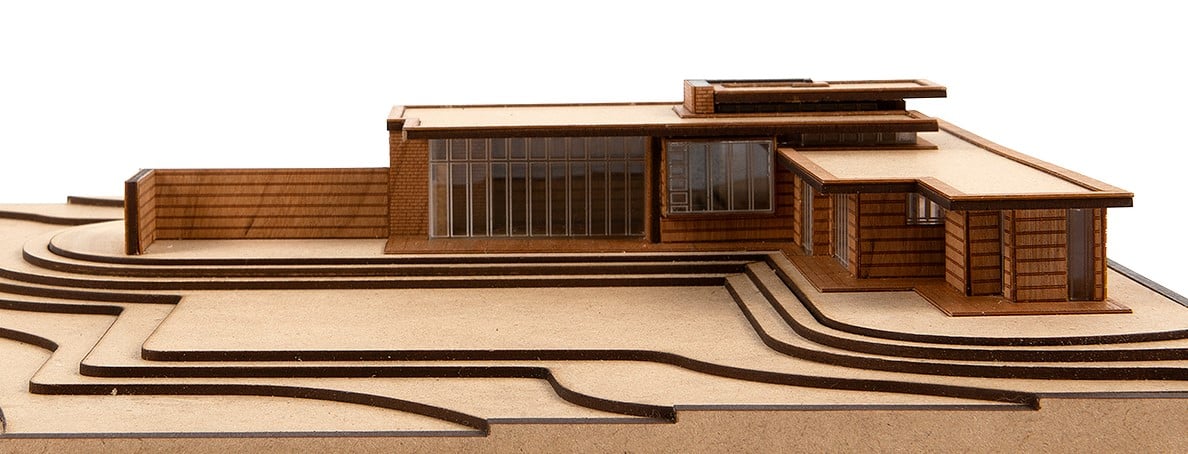
Miniature Models of Iconic Frank Lloyd Wright Landmarks
Frank Lloyd Wright Foundation | Apr 19, 2021
The Frank Lloyd Wright Foundation has recently collaborated with Bree Industries, taking several Wright-designed landmarks and crafting them into beautiful miniature wooden build-it-yourself models. We spoke with founder Marcus Bree to learn more about the process and the creation of the new landmark model collection. Learn how to purchase and build your own model below.
Pictured above: a horizontal view of the Jacobs House model by Bree Industries
What inspired you to create these Frank Lloyd Wright models?
During my time in art school, the work of Frank Lloyd Wright was regularly discussed during History of Design lectures. The spiral and visitor flow through the Guggenheim, the cast in situ structure of Unity Temple, the dendriform columns of the SC Johnson Wax Building, and the structure developed for the Jacobs I House were all regular topics of discussion. I think this and my lecturer’s passion fostered my interest in architecture. Over the past number of years I have been fortunate to visit many great buildings around the world but I never found the available souvenirs very inspiring. I thought there was an opportunity to use my skills to address this.
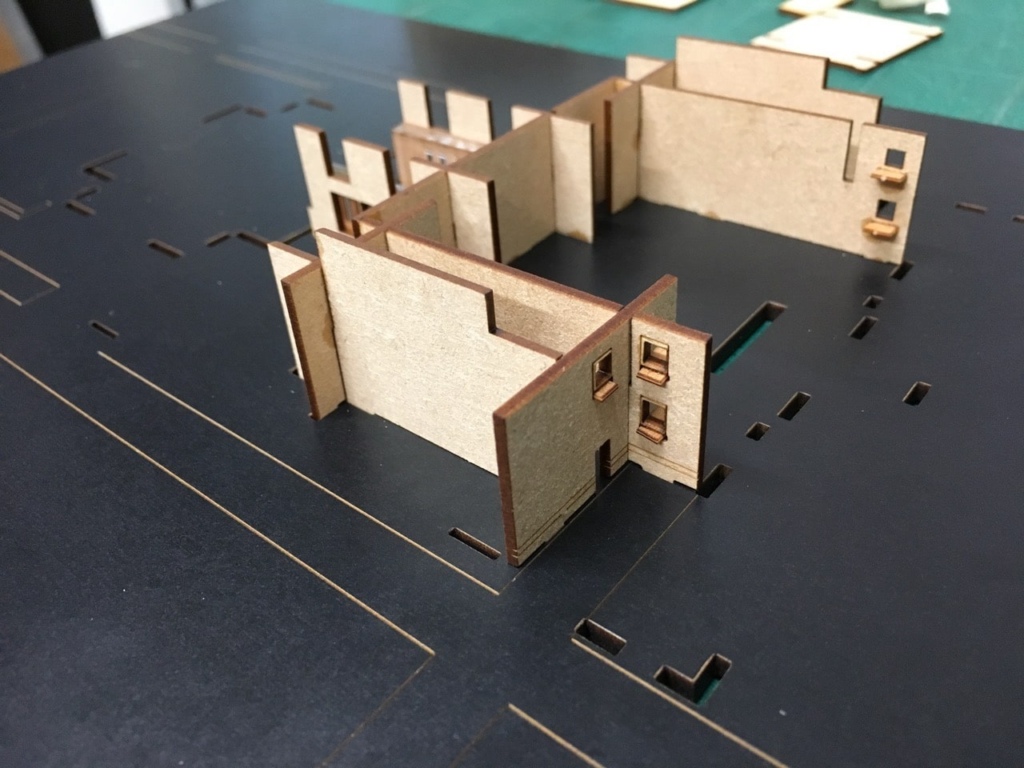
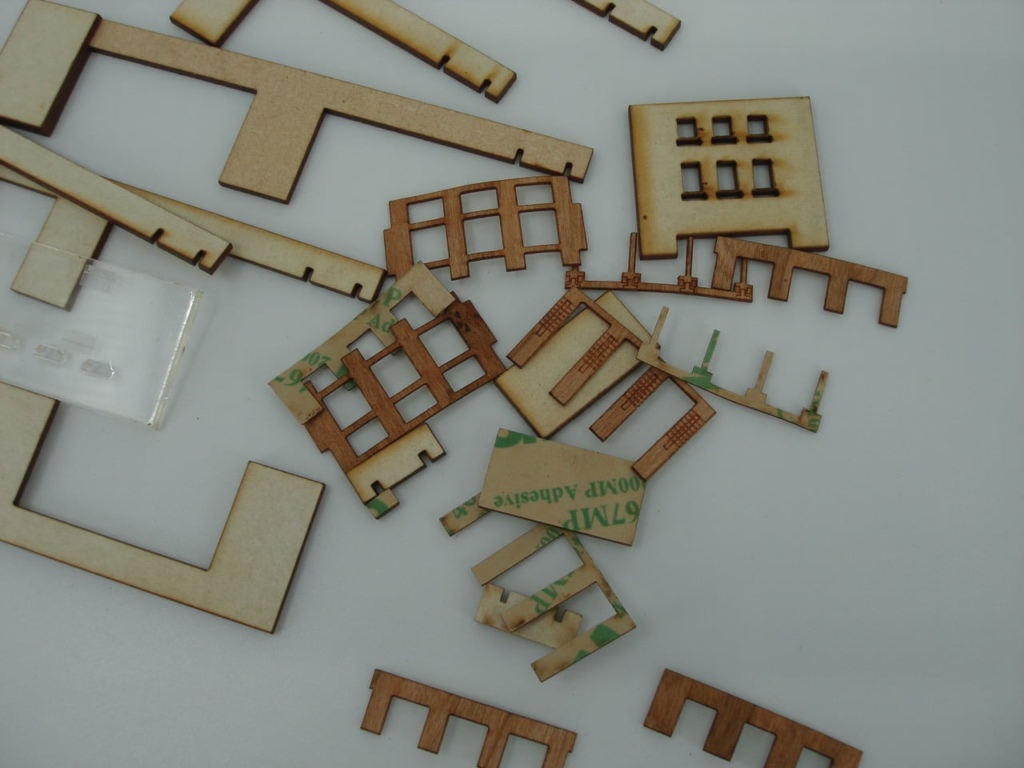
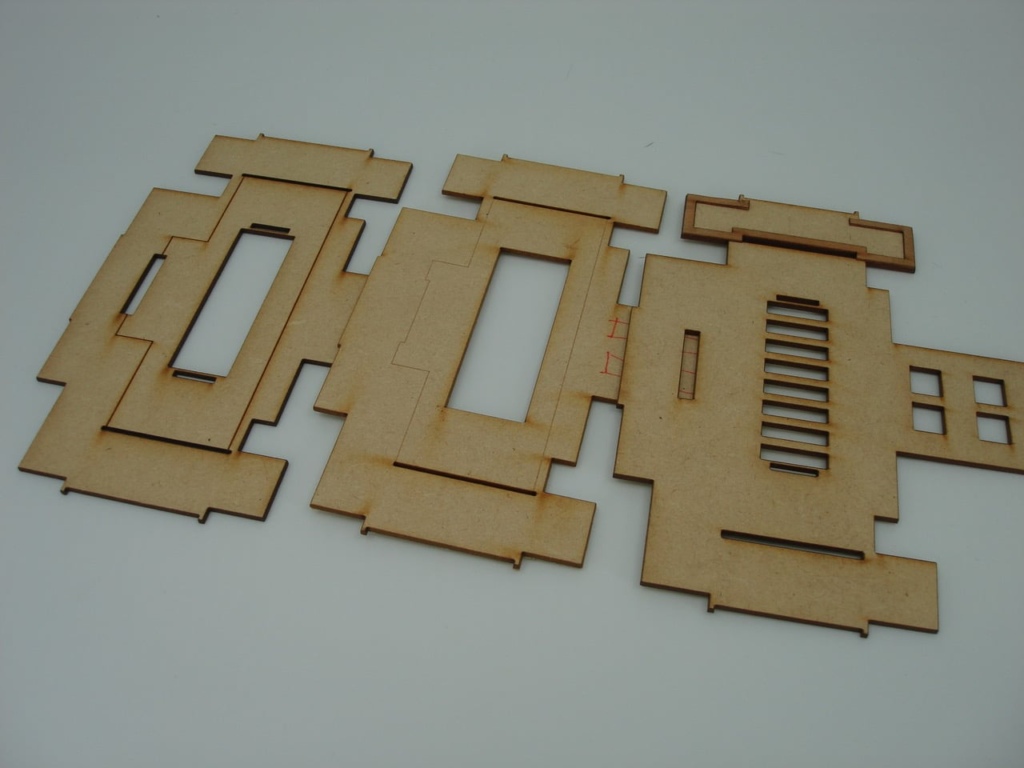
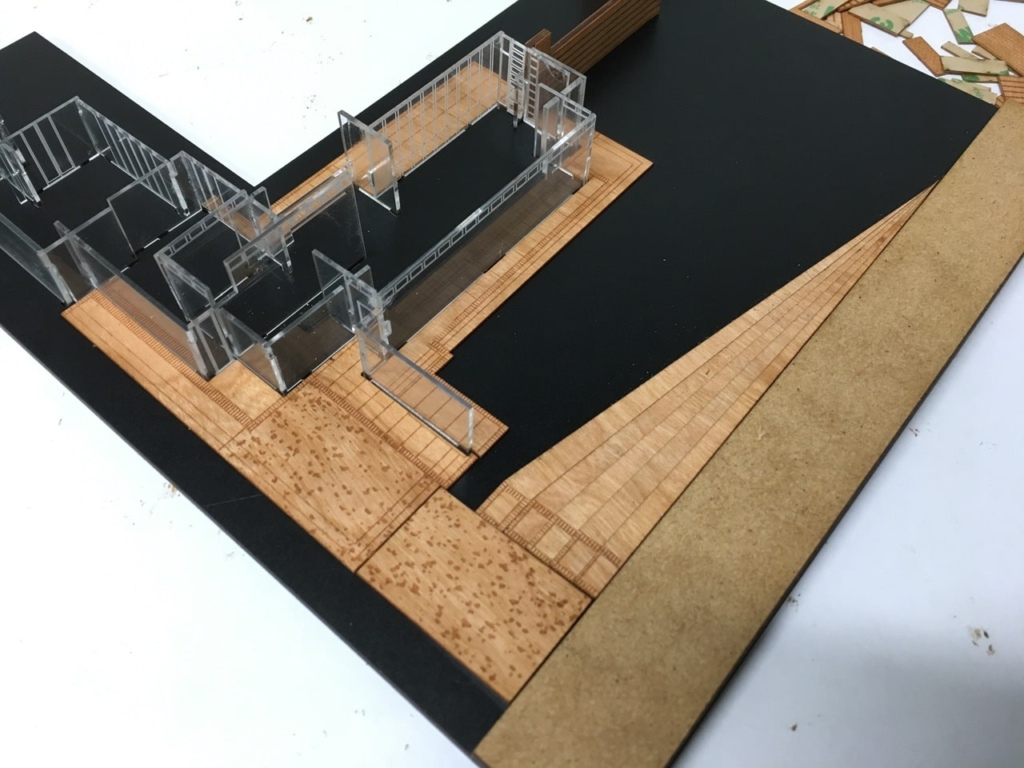
Which Wright buildings inspired you the most when you decided to try creating these models?

Rendering of the Larkin Administration Building by David Romero
My area of interest lies in the space planning, engineering, and geometry employed by Wright. What is evident in Wright’s work is his ability to constantly push the boundaries of engineering while referencing planning strategies employed by other cultures. If I were to single out one particular building by Wright as inspirational it would have to be the Larkin Building.
Was it challenging to translate the buildings into a smaller scale for the models?
Finding suitable scales to represent each building was a challenge and there were a number of factors to consider. The final built kits needed to be small enough to display on a desk or bookshelf yet the parts needed to be big enough to assemble by the less dexterous modeller. We try, where possible, to retain a truth to the raw materials we use and it is intended that our models have the look and feel as if they could have come from the architects own studio.
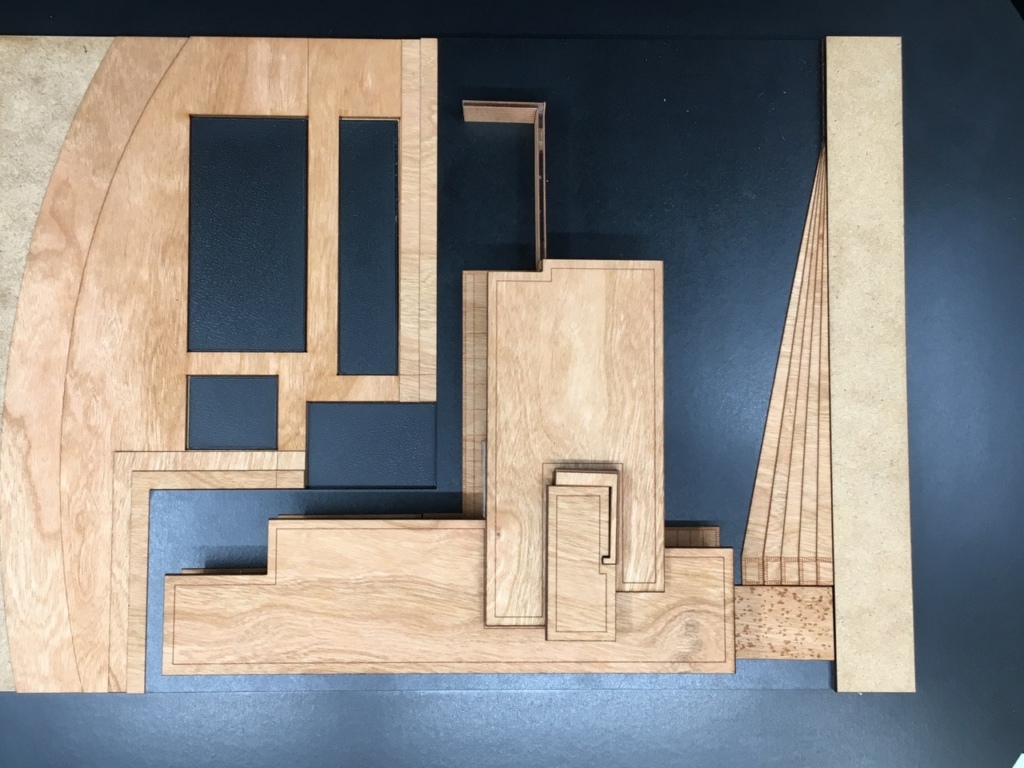
What did the process for creating these models look like?
The development process starts by compiling as much visual reference as possible, be it from books or the internet. This covers both photographs and drawings. We’ve also been very fortunate have access to the Frank Lloyd Wright Foundation’s Archive of digital reference. There are typically a couple of well written historical books that chart development of Wright’s buildings from the concept development through the construction process. We constantly cross-reference drawings from different sources with photos of the build and final built images. This often highlights inaccuracies in drawings and modifications carried out after a building’s completion.
We develop our models using a variety of media from simple paper and card mock-ups to hand drawings and 3d CAD models. Parts are cut countless times to resolve assembly details while utilizing the material’s inherent qualities.

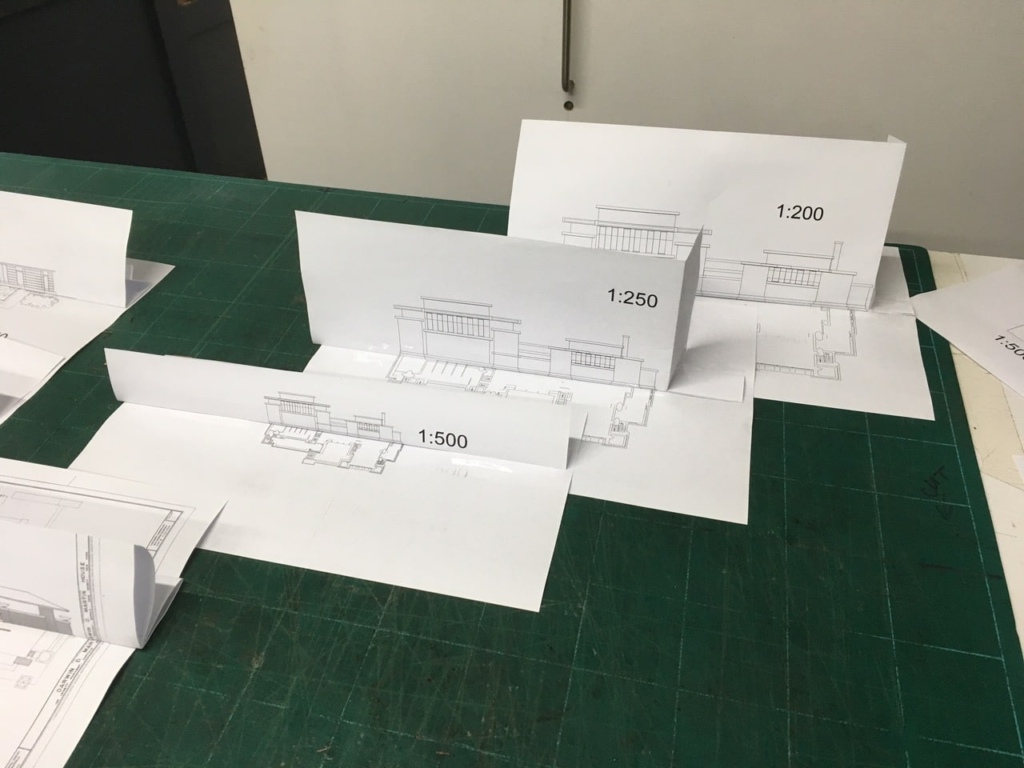
What did you learn about Wright’s buildings by making these products?
While Wright’s approach to architecture was often revolutionary, many theories originated from or referenced other cultures. He frequently re-used certain details and geometry and then adapted their scale to suit the situation.
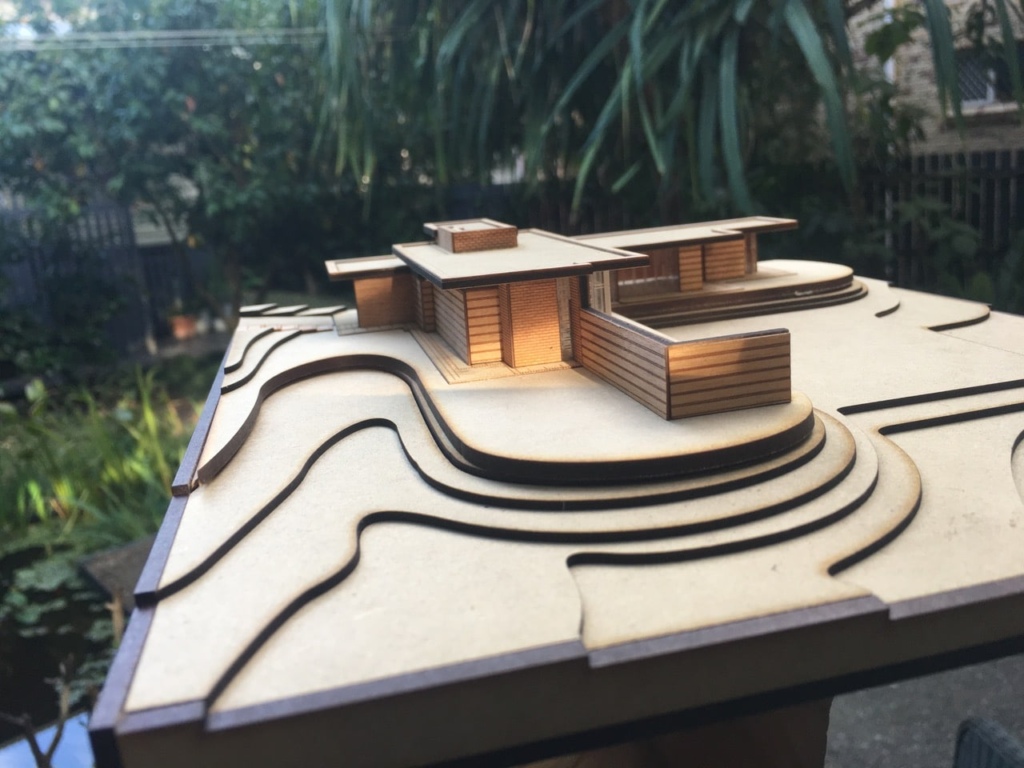
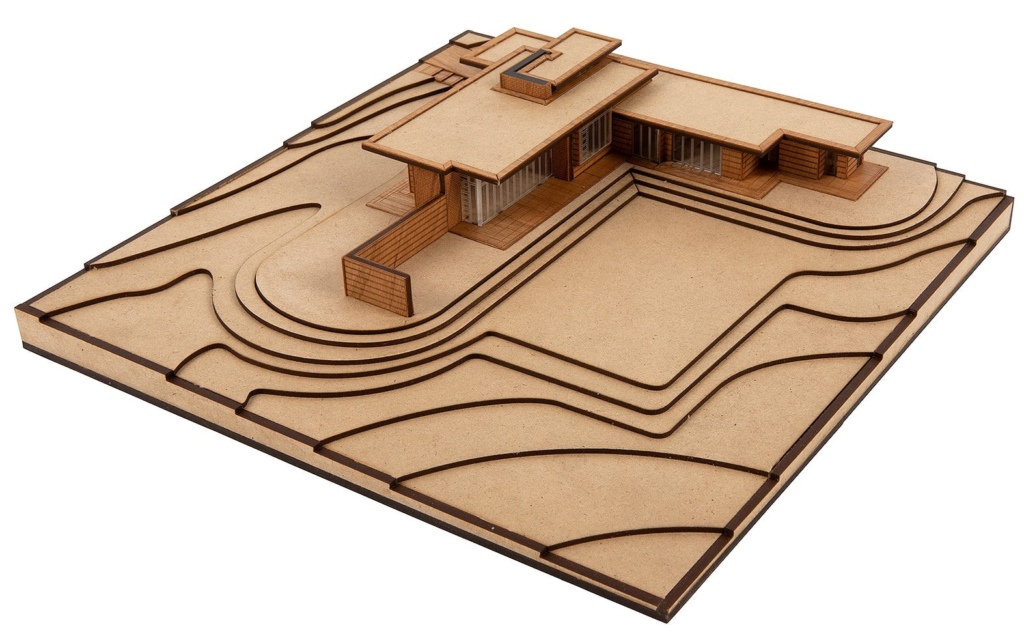
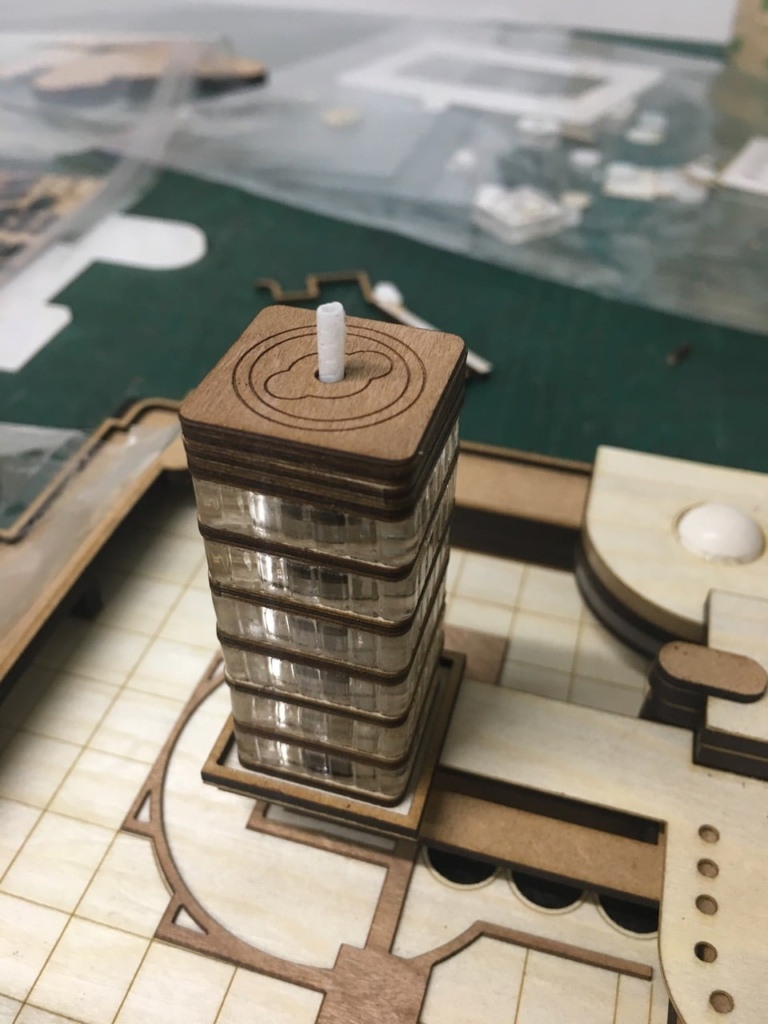
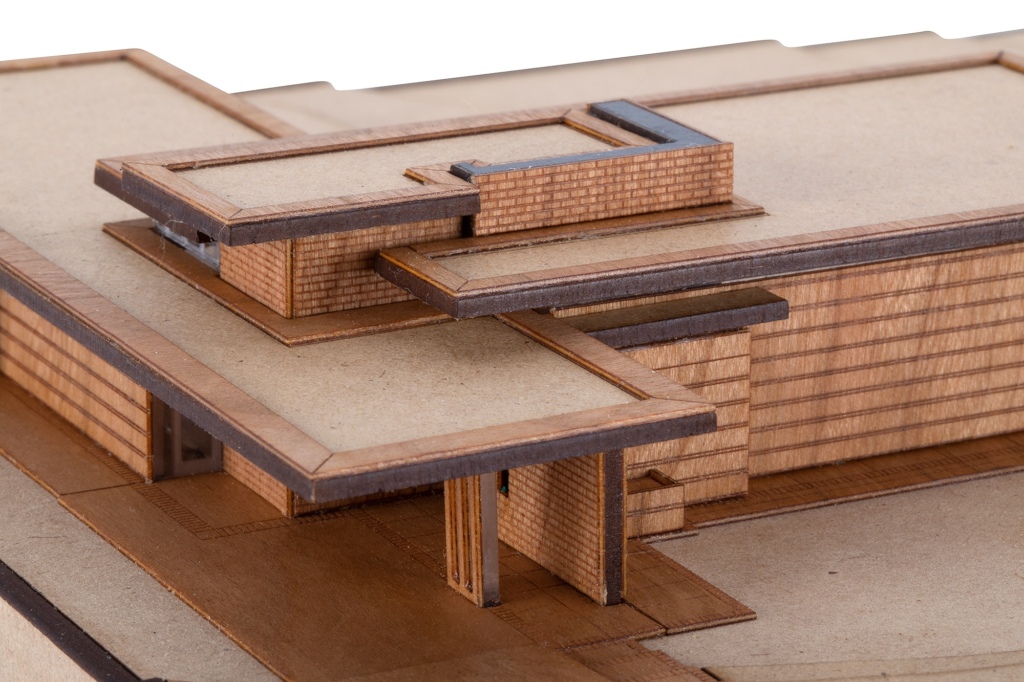
What is your connection to Wright? How did you first come to know his work?
The first Frank Lloyd Wright building I was aware of was Unity Temple. My initial exposure to it was from an old black and white photograph I saw during college. The photo highlighted Unity Temple’s bold and striking form accompanied by an illustration showing its elevations softened by cascading plants.

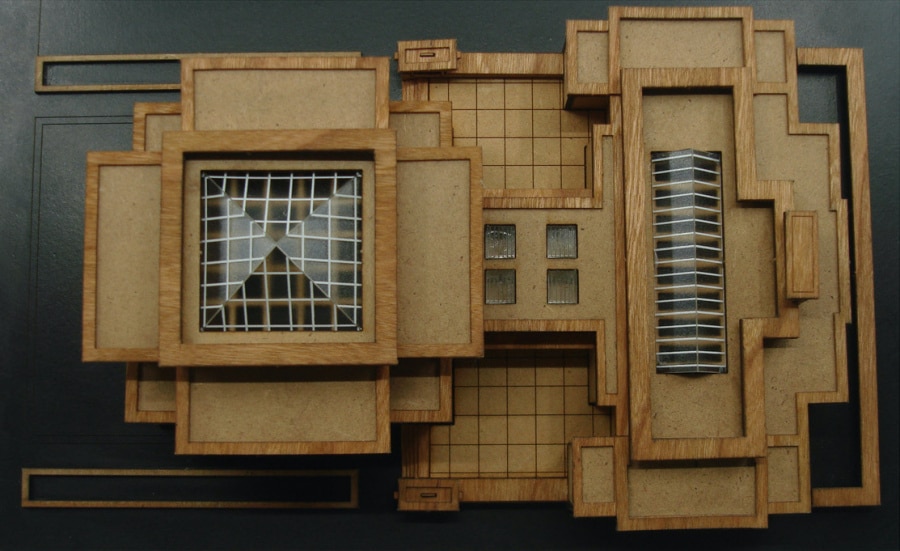
What kind of feedback have you received from customers on the building process?
Our customers regularly write to us with their feedback which is really nice. Customers comment on how clear our instructions are and how enjoyable the process of creating the model building is. Our models are not difficult to build; you simply have to follow the instructions and enjoy the process. The result is something you can be proud that you built and will most likely treasure.

The Frank Lloyd Wright Store currently carries four different Bree Industries models including the Jacobs I House, the Solomon R. Guggenheim Museum, Unity Temple, and the SC Johnson Wax Headquarters.
The model kits are a pleasure to build with each step of the process illustrated and clearly described. All you’ll need to build your model is a good quality wood glue, a knife to remove individual parts from their sheets, and a flat work surface.
Beautifully boxed, these models make an ideal gift for that architect friend, history buff, or even for you!
